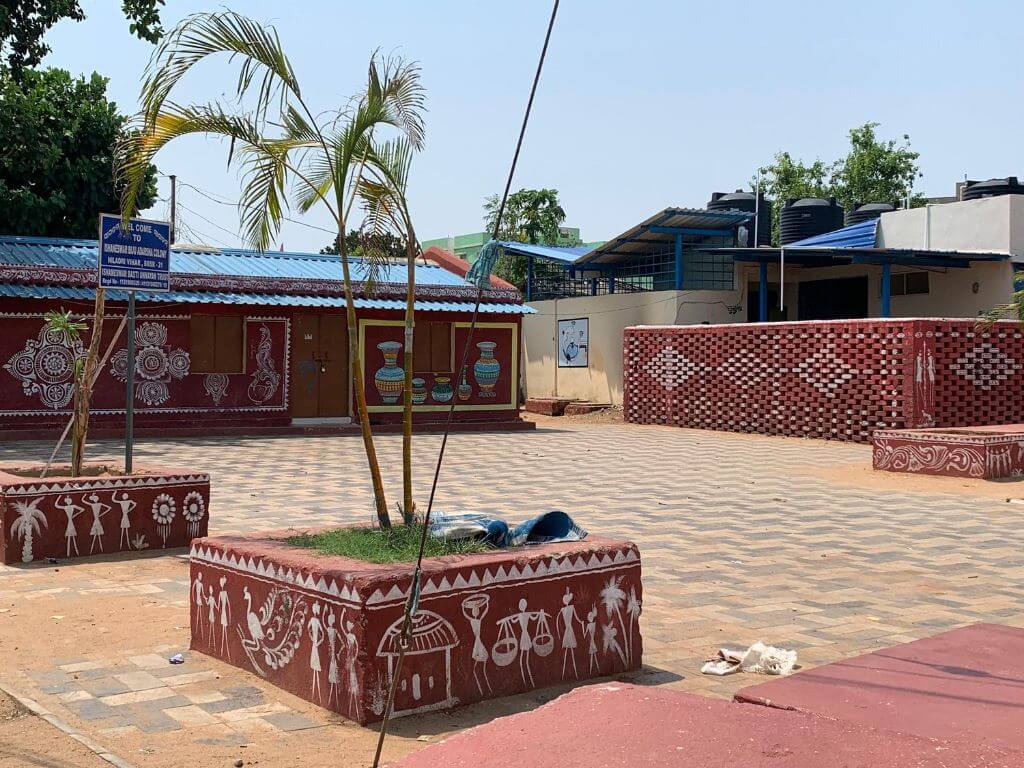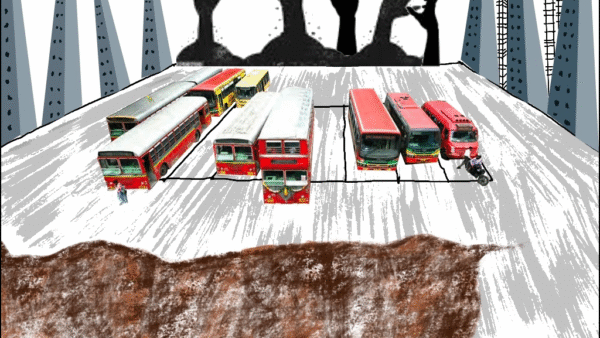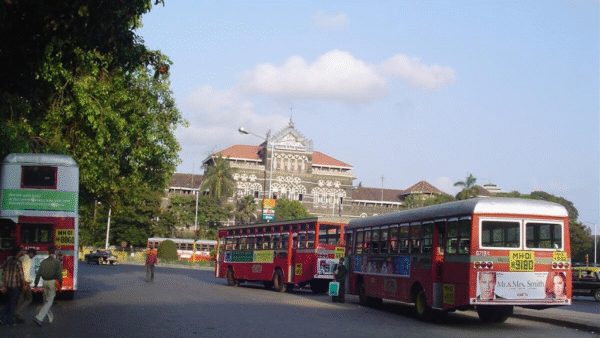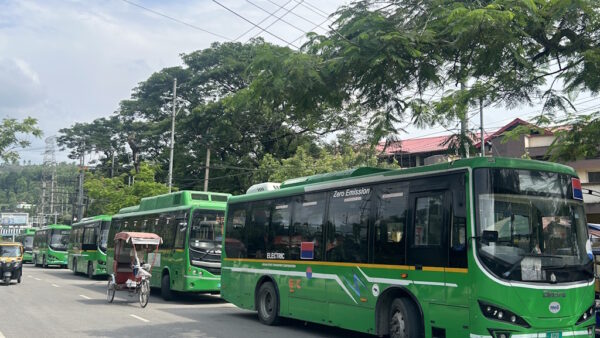In the Munda Sahi area of Bhubaneswar, Odisha’s capital city, 36-year-old Tutu Maharana has spent his entire life and seen it turn into a prime zone. When his parents began their life here, it was the outskirts and all they had was a make-shift asbestos-roofed one room; the cluster had similar dwellings of about 25 families. Over time, the houses became larger and concretised, more houses came up, and the slum now has 128 families. It was given electricity and water connections, inner roads and street lights, but Maharana and his neighbours lived in constant fear of eviction.
The past few years have brought hope to the slum dwellers of not only secure homes but also titles to the land, as a result of Odisha government’s Jaga Mission. Maharana, who works as a driver, his family, and his brothers’ families can all look forward to living – with security. “I can’t think of shifting from here,” says Maharana, hopeful as the government has completed the Urban Slum Household Area (USHA) survey — the manual survey to identify slum dwellers eligible for legal title of land which will allow them to avail government schemes such as the Pradhan Mantri Awas Yojna to build houses.
The Jaga (land or place) Mission, launched in May 2018, was the outcome of the historic legislation, the Odisha Land Rights to Slum Dwellers Act of 2017. The law envisaged not only liveable habitats for slum dwellers but also security of tenurial rights which remains a distant dream for the urban poor in India. Such tenured tenements would have improved amenities and, therefore, offer a better quality of life to slum dwellers.
The Jaga Mission aimed to touch the lives of 1.7 million slum dwellers in nearly 3,000 slums (2,919 according to data then) across Odisha’s cities. Bhubaneswar alone had 436 slums, according to the state’s Economic Survey 2019-20. The Mission focuses on three core issues – granting land rights to residents and enabling access to housing subsidies; upgrading infrastructure to improve living conditions; and mobilising the community to empower marginalised groups to construct, manage and maintain the upgraded facilities.
The Mission includes upgrading physical infrastructure in slums such as roads, drains, electricity and streetlights, sanitation, water supply, and community centres — called “Parichay” centres, a common space to gather. The Standard Operating Procedures (SOPs) for the Mission were put in place by the Centre for Policy Research, and the Tata Steel Foundation was entrusted with the task of implementing the ambitious project. Bengaluru-based non-profit Janaagraha was entrusted with capacity building of officers of urban local bodies and the Slum Dwellers’ Association members.
“Odisha envisioned that there should be no slums. People are entitled to basic civic facilities and infrastructure. The so-called encroachers actually help run the city. Slums are seen as a hindrance to urban planning, and the first step is to evict the slum dwellers,” says Suchisnata Sahoo, Consultant, Jaga Mission. “The state government decided that instead of evicting slum dwellers, it will give them all facilities, the non-liveable slum would be turned into liveable parts of the mainstream city fabric.”
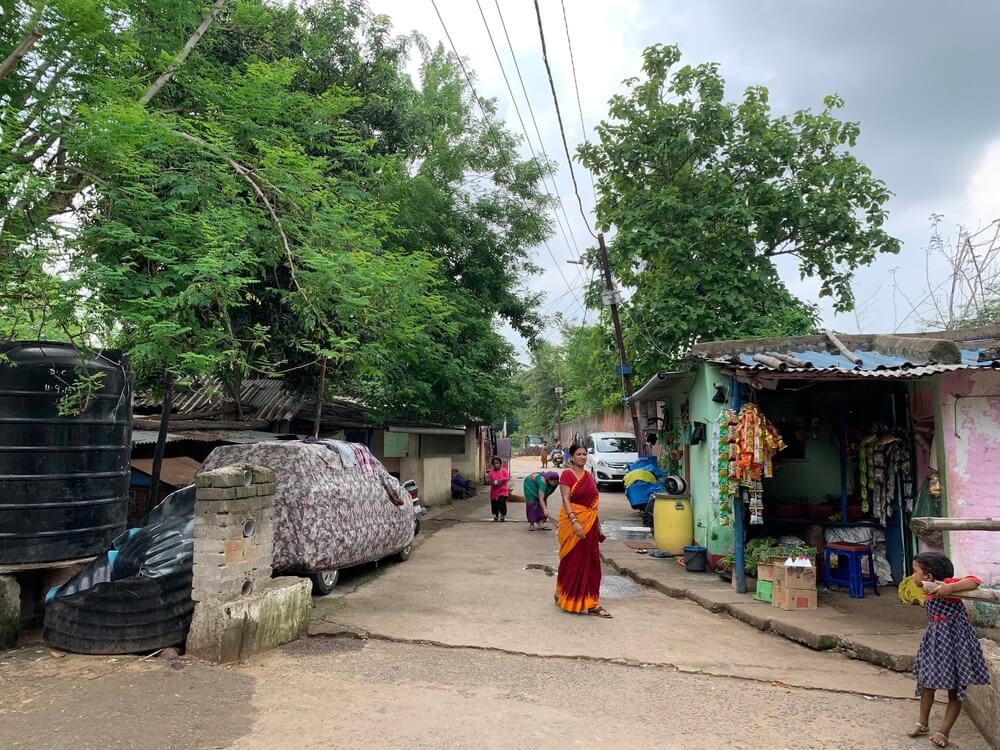
Photo: Shobha Surin
The nuts and bolts
The Jaga Mission began with pilots in 19 cities. In Phase 2 of the Mission, slum infra upgradation was piloted in 28 cities and was eventually scaled up to include all cities. Of these, ten urban local bodies (ULBs) have virtually no slums now.[1]
Drone surveys first mapped the land and helped identify the exact area of a household or a slum. Then followed the manual, ground surveys or Urban Slum Household Area (USHA) to identify the claimants. As is the practice, they tend to be called ‘beneficiaries’ but they are really citizens exercising their rights.
“The drone survey identified the slum boundaries. It was an extensive process. All the challenges were identified at the GIS mapping stage…We have the whole gamut of slums and we were responsible for the roads, street lighting and all infrastructure,” says Preeti Prada Panigrahi, who led the Jaga Mission for the state government from March 2020 to April 2023.
The landmark aspect of the Mission is that, unlike in other cities where slum dwellers are eligible for tiny houses with substandard amenities, it secured tenurial rights of slum dwellers; with the land in their name, they could build as they wanted. In this, Odisha can well be regarded as the pioneer.
The legal importance of the title
The Jaga Mission sounds too good to be true for people like Maharana. It has not been a smooth flow for officials either. As the mayor of Bhubaneswar, Sulochana Das, said, “The settlement of land rights on disputable government land and private land was an uphill task.”
In many slums, the land being given to people belongs to the government but there are slums where the land belongs to a royal family, a temple, forest, port, or it could be in an environmentally hazardous location. Where land rights could not be given to slum dwellers, they had to be shifted and new liveable habitats were created, according to officials involved. The new colonies are called Biju Adarsh Colonies.
The land title makes it clear that slum dwellers will only use it for residential purposes, land rights certificates will be issued jointly for married couples, the land is inheritable but not transferable, and the certificate will be accepted as a valid address proof.[2] Bringing in the woman of the house as the primary holder with her husband as the co-beneficiary was a progressive move. “We ensure that she is present during the survey. Often, women do not know they are owners of a property,” says Sahoo, who has been with the Mission since 2019.
The land conversion is done in the revenue department and reflects in the official records as land held by slum dwellers so that the process is legitimised. “These slums would have existed in a particular area for years. It has to undergo a process initiated by the ULBs which could be the Notified Area Council (NAC), municipality, or municipal corporation. They place it for necessary approval at the collectorate, which in turn issues it to respective departments. If it’s complicated such as a water body, then the approvals are given by the Revenue Divisional Commissioner,” she says.
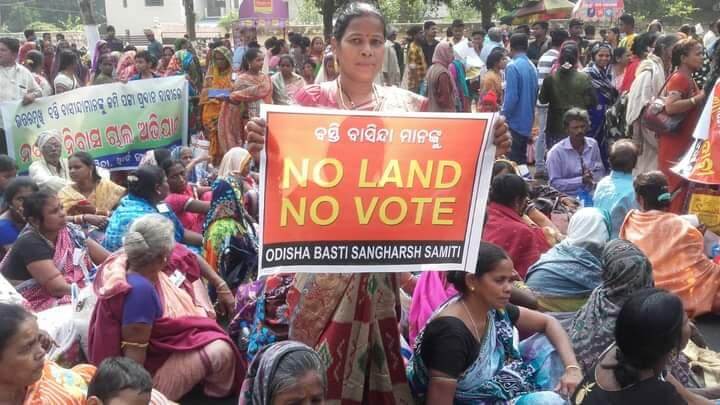
Photo: Pratap Sahu
The push and pull factors
The landmark and progressive Jaga Mission may have been rolled out by the state government but there was also the push factor – movements by slum dwellers and their assertion of claim to the land. Pratap Sahu, president of Odisha Basti Sangharsh Samiti, told Question of Cities that the organisation representing thousands of slum dwellers, has been demanding ‘Land for All’ for years. “In 2016-2017, we submitted 50,000 applications to the government demanding land, not houses,” he says.
The involvement of a rights movement meant that there was a participatory element in the Mission. Slum dwellers were made implementing partners, a Slum Dwellers Association was formed in each slum, in which at least half of the members mandatorily had to be women. It anchored the process within a slum connecting slum dwellers to municipal and government officials. “This process makes it participatory, the SDAs take ownership of their own slums and communities. They become the fourth tier of governance and the urban poor perspective is delivered,” says Panigrahi.
Rupchand Hembram, 42, member of the Munda Sahi SDA, says, “We have our hands full. We regularly have meetings with ward officers.” Hembram grew up in this slum and has seen it populate. His thatched house became a concrete structure. “We are a family of five. We are still not clear on the Jaga Mission but we are happy that the government has started the process of providing land titles. From having no property, we will actually own land which is a big change for us,” he says excitedly.
Of Bhubaneswar’s 436 slums, 135 have been delisted as slums after they were transformed into Biju Adarsh Colonies, according to mayor Das. Officials familiar with the work say there is a need for continuous improvement given the large number of dynamics in the nearly 3,000 slums in the state. “Every slum has a diversity of opportunities and bottlenecks. There are multiple challenges from the community, individuals, politicians, and also topographical complexities. We have developed a connect with the people, we know which slum has a responsive community as well as slums which need efforts,” says Sahoo.
The gaps and critiques
In the five years since its implementation, the SOPs have been revised many times for effective implementation. Mugdha Mohapatra, research associate, CPR Land Rights Initiative, studied the Mission. She writes, “My key findings: (i) land rights under the Act are not sufficiently integrated within the existing legal framework and there exist several ambiguities. As a result, the land right granted cannot be used as an economic resource and offers limited increase in tenure security; (ii) land rights are beneficial yet insufficient to lead to the proposed goals of increasing access to municipal services and access to subsidies; (iii) government intervention is required at each stage of the slum redevelopment process to ensure the achievement of these goals.”[3]
There are other critical voices. “Legitimising slum dwellers is a good thing, but they should be rehabilitated or regularised in situ. Jaga Mission has not included building houses for the urban poor; only giving land titles is not enough,” says Sudarshan Chhotray, director of Focus Odisha Foundation, an NGO.
“It’s nice that slum dwellers do not have the ‘encroachers’ tag anymore and get legal recognition. But how many will actually get land titles remains to be seen. The plan is good for NAC and municipal areas, but the problem is in big cities like Bhubaneswar, Sambalpur, Rourkela, Cuttack and Berhampur. Almost 50 percent of Salia Sahi slum is on forest land. First, give land rights under the Forest Rights Act,” he adds.
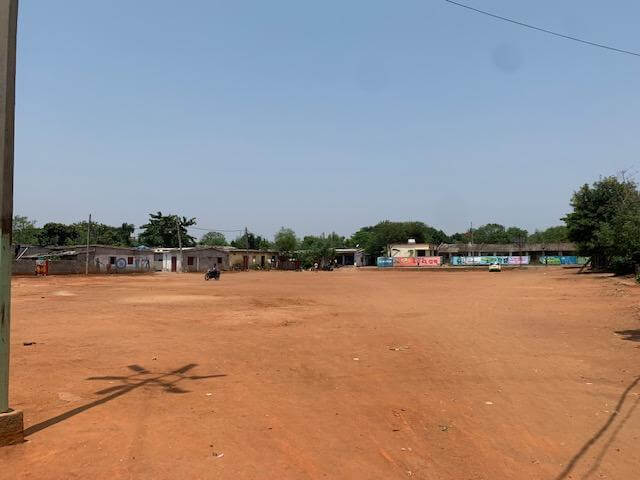
Photo: Shobha Surin
Hope for future
In Bhubaneswar, boards announcing Biju Adarsh Colony under the Jaga Mission are becoming common where slums used to be. Niladri Vihar’s road leading to Ishaneswar slums has one. Here, the survey work is over, evident from the USHA stickers on closed doors. Santosh Nayak, a member of the Slum Dwellers’ Association (SDA), enthusiastically says, “This is a huge slum with 550 houses of which around 225 are legal. We are unsure of the government’s plans but our slum is a model, we ensure that it is litter-free and hygienic.”
Salia Sahi, the largest slum in Bhubaneswar, houses more than a lakh dwellers. Situated on forest land, bordering the posh IRC Village area and Chandaka forest, the slum mostly has tribals who migrated for jobs; it is one of the prime areas in the city. Wide roads, big open grounds and most houses have gardens and courtyards mark the slum. Although on encroached land, slum dwellers protested the recent eviction for a road but a few houses were demolished. The Jaga Mission has started upgrading work in the slum. “Upgrading a slum and giving land rights are not intertwined,” says Panigrahi, “There is convergence, all schemes are layered. So, Jaga Mission will give you land, Pradhan Mantri Awas Yojana will give you housing. Swachh Bharat will give you toilets.”
Pratap Sahu brings a sobering note. “The list says 436 slums in Bhubaneswar but there are another 100 at least which are not added. When the Jaga Mission started, five municipal corporations were left out – Sambalpur, Rourkela, Bhubaneswar, Cuttack, Berhampur – we protested. After the USHA survey, some families were left out despite having documents such as ration cards. The government is eyeing elections. We still demand a slum welfare board,” he explains.
The UN-Habitat reports that around 2 million people, most of them slum dwellers, are forcibly evicted every year. The effects of forced evictions on slum dwellers leave them homeless and force them deeper into poverty. Slum upgrading is acknowledged as an effective means of improving their condition. Odisha’s Jaga Mission might make it as a case study.[4]
Manav Khaire, Research Fellow at the Ashank Desai Centre for Policy Studies, IIT Bombay, says slum housing is a multifaceted issue. “Whether the housing is legal or illegal, whether the quality of housing makes it liveable or unliveable, and then the amenities available such as water, roads, infrastructure, and electricity. Jaga Mission focuses on these multiple issues and is a benchmark for other cities to follow.”
Khaire remarks on a crucial policy shift. “Instead of considering informal or slum housing as the fallout of urbanisation, the Jaga Mission approaches slums as integral to the process of urbanisation which is a big change. In this way, it is reorienting the state’s understanding of and response to informal housing,” he opines.
Mumbai, Bengaluru and Delhi can learn from Jaga Mission to adopt the approach if not the entire model. With Punjab borrowing the SOP for a similar initiative called Basera, and Himachal Pradesh mulling to replicate it, the Jaga Mission has set an example for cities across the country. The real test of handing land titles under Jaga Mission lies in the capital city, Bhubaneswar, where land value and the influence of market forces are high. With Odisha targeting to be slum-free this year, the Jaga Mission has immense work to do.
Shobha Surin, currently based in Bhubaneswar, is a journalist with 20 years of experience in newsrooms in Mumbai. She has seen Bhubaneswar from close quarters as the quiet green city transformed into a bustling concrete jungle. An associate editor at Question of Cities, she is concerned about Climate Change and is learning about sustainable development.
Cover photo: A Community Centre at Ishaneswar Biju Adarsh Colony in Bhubaneswar; Credit: Shobha Surin

